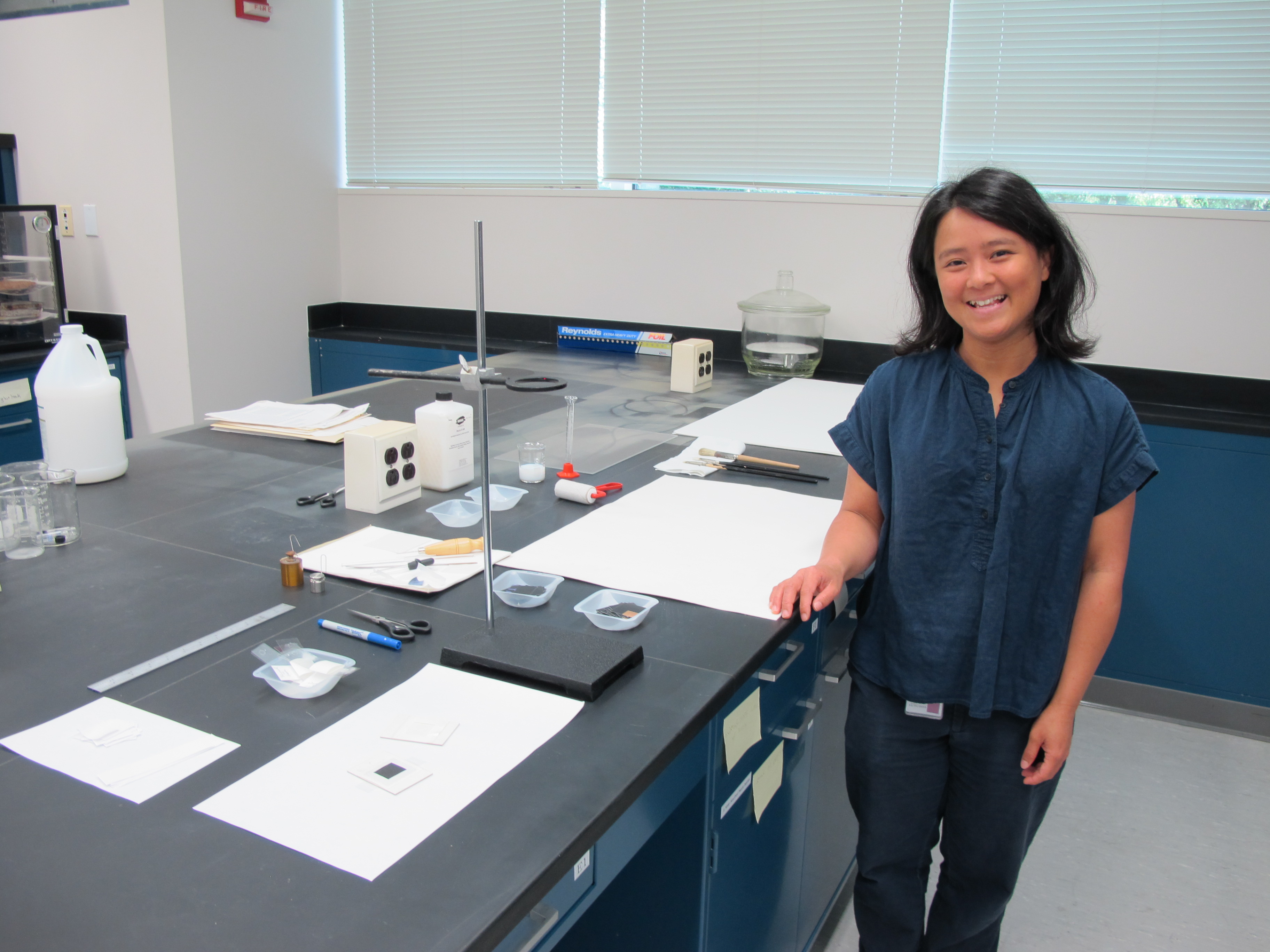
Fulbright Scholar Tests Synthetic Paper in Heritage Science Research Lab
By Angela Tudico | National Archives News
WASHINGTON, September 8, 2023 — Cancy Chu, the National Archives’ first Fulbright Scholar, spent the last year at the agency’s Heritage Science Research and Testing Lab determining the best tear-repair methods for synthetic paper.
Synthetic paper contains plastic components. It does not behave like natural-fiber paper, making repairs a challenge for conservators.
Chu, a Ph.D. candidate from the University of Melbourne’s Grimwade Centre for Cultural Materials Conservation, tested more than 160 adhesives over the course of the year to identify the best combination and concentration of adhesive to use on matte laminated paper, a type of paper found in book and periodical covers since the 1990s.
“The applicability of Cancy’s work was very obvious right away,” said Lindsay Oakley, Director of Heritage Science Research and Testing. “Her project fits with the Heritage Science team’s overall strategy goals, especially building our resilience as an archive by anticipating future issues and needs, as well as connecting research with users.”
Chu’s year-long research culminated in a workshop with conservation staff from across the agency. She presented her findings in a practical, hands-on tutorial on repair techniques for synthetic papers.
“I’m really excited to share what I’ve learned because there’s a use to sharing your research,” Chu said. “Even if something didn’t work as well as I hoped it would, having a negative result is still a result. If I don’t share my research, it’s almost like I didn’t do it because no one else would know about it.”
The exchange of ideas flowed both ways during Chu’s time at the lab, and she is grateful for the collaborative nature of the lab and the team at the National Archives.
“I really appreciated being part of the Heritage Science team because everyone’s been so great at sharing their expertise,” Chu said. “I get to poke my head in and see what’s happening in the lab all the time. So if there’s a project or record coming through that needs analysis, I get to see how that’s done and see all the exciting things happening around the lab.”
The team helped Chu make connections beyond the National Archives as well by facilitating visits to neighboring institutions. Chu presented her work at two colleges, spoke with conservation students about plastics, and even met another visiting conservation fellow at the National Gallery of Art also working on synthetic paper.
“I admire the collegiality at the National Archives and with this team in particular,” Chu said. “I loved the sense of joy that people have in their work around here. That kind of community is so important to doing great work. I want to hold on to that and bring that wherever I go in the future.”
The Fulbright Scholar Program is currently accepting applications for the Fulbright-National Archives Heritage Science Fellowship for the 2024–25 academic year. Applications are due October 15, 2023.

